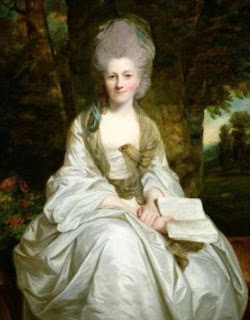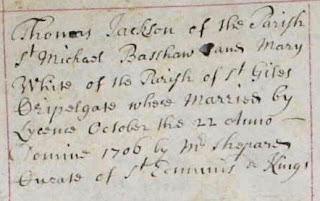Before the ancestry of Maria Harriet (née Hesketh) Palk, mother of Annette (née Palk) Baird, is explored, I wanted to update, and elaborate on, Ruvigny's account of Annette and her siblings, which can be found on pp. 130-131 of his 1907
volume. In
had a line of descent from George Plantagenet, 1st Duke of Clarence, which had been overlooked by Ruvigny. So the 1st Baron Haldon, his children, and his siblings and their children, all qualify for inclusion in the marquis's previous 1905
, via their mother's descent from the duke).
The Palks reached their peak politically during the reign of Queen Victoria in the person of Sir Lawrence Palk, the fourth baronet, who was so helpful and supportive to the Whigs that in 1880, after more than twenty-five years of loyalty in the Commons, he was elevated to the peerage as Baron Haldon. He was less successful financially: despite owning more than 10,000 acres of land in Devon, which generated an income of £109,275 in 1873, most of the money went into paying off loans and mortgages secured against the estates. Then there was the problem of his heir:
 |
| Caricature of 2nd Baron Haldon in Vanity Fair |
Lawrence Hesketh Palk, unlike his father and their forebears, had no inclination for politics, nor did he prove very effective within the military (unlike his three younger brothers). What he excelled at was being a gentleman, and the London of the late-Victorian period was a banquet for the aristocracy. The caricature of him drawn for
Vanity Fair magazine later in his life fits completely into the stereotype of the English gentleman: starched collar, stuffed shirt, monocle, hands in his pockets. He had made a very good marriage at the age of 22 to Constance, the 21-year-old eldest of the three daughters and co-heirs of the 7th Viscount Barrington, and they had four children in their first seven years of marriage, making their home with her parents at their seat Beckett House, in Shrivenham, Berkshire. But by the close of the 1870s, the marriage was on the rocks. In the summer of 1880, mere weeks after her father-in-law was elevated to the peerage as Baron Haldon, Hon. Constance Palk ignored her husband's wishes, and embarked on a trip to Italy and Egypt. Whether or not she ever returned to England is not certain from the court documents, but what is certain is that she never returned to her marriage. In May 1882, she filed for divorce on the grounds that her husband had been having an affair in London with one Clara Mary Charlotte Smith. In his response, Lawrence Hesketh Palk denied the adultery and claimed it was his wife's abandonment of him that was the real issue. Ten months later, in March 1883, Lawrence Hesketh's father died, and he succeeded as 2nd Baron Haldon. Two weeks later, he came to an agreement with his estranged wife: they asked that the petition for divorce be dismissed, but they remained permanently separated, with the new Lady Haldon making her home in Naples. Though he had staved off the scandal of a divorce, the 2nd Baron Haldon could not stave off the creditors, and the next few years saw tremendous pressure put on him by financial institutions to sell the family holdings. In 1892, Haldon House and the surrounding area as well as Torquay and the harbour were all sold, forcing the second Lord Haldon into bankruptcy, which in turn forced him out of his seat in the House of Lords. The peerage that had been granted as the result of a long political career now had no voice whatsoever in the political process. The 2nd Baron Haldon retired to Fulham, a middle-class suburb of London, where he lived modestly but generously, and was beloved by the locals.
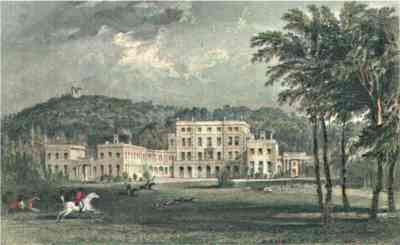 |
Haldon House, Devon. The main house was demolished in 1920.
What remains has been made into a hotel. |
The financial difficulties of the family, combined with their parents' separation, devastated the children of the 2nd Baron Haldon, and the three younger ones never married, while
Lawrence William Palk, the eldest child and heir to the barony, would come to wish he never did. He was 23 years old when the family seat of Haldon House was sold, and already surpassing his father in the gentleman-in-London lifestyle.
 |
Lidiana (née Maichlé), Mdlle. Minska
(c.1856-1928) |
He took up with
Lidiana (née Maichlé) Drew, a twice-married Swiss-born actress, twelve years his senior, who billed herself as
Mdlle. Minska, and who was having success on the Drury Lane stage. She was in the process of divorcing her second husband Swedish-born Erik Forssell when she began the affair with young Lawrence William Palk, who brashly married her in March 1893 at St James Westminster. The couple then went to Australia with Lawrence William hoping to rebuild the family fortunes, and a son was born there three years later. When he made money on the goldfields, Lawrence William went to Sydney, and qualified as a mining engineer, but as he approached his thirties the young heir realized that the marriage he had made in the heat of passion, had turned sour. He joined the Imperial Yeomanryand served in the South African War, while his wife returned to the stage, now billing herself as Lady Haldon. Even before he succeeded to the title at his father's death on the last day of 1903, the
3rd Baron Haldon had begun proceedings to nullify his marriage, claiming that his wife's attempt to divorce her previous husband Erik Forssell had not proved successful, and so his own marriage to her was bigamous. Lady Haldon countered that in October 1892 she had obtained from the Magistrate's Court in Stockholm, a permanent decree of divorce from Forssell. When World War I broke out, Lord Haldon, despite being in his mid-40s, joined up as a private, and fought bravely, being mentioned in despatches. Back in England following the War, Lord Haldon, who described himself as
"a peer by birth and a mining engineer by profession," found that neither earned him a living. Though previous attempts to nullify his marriage, made in 1902 and in 1905, had failed, Lord Haldon tried again. A deed of separation was obtained in 1920, followed by the attempt of his estranged wife, long retired from the stage, to recover money from him, which resulted in the court in Croydon, Surrey, awarding her, in October 1922, £2/month, which it deemed all that Lord Haldon was able to afford. He collected his mail at the House of Lords, but slept in low-rent boarding houses, and even on park benches, as the press discovered after he was caught in a police round-up of vagrants along the Thames.
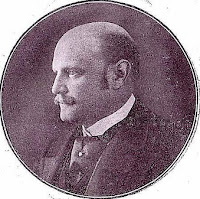 |
| 3rd Baron Haldon (1869-1933) |
His wife's death at the end of 1928, finally freed up the nearly 60-year-old Lord Haldon to improve his lot through a second marriage. The woman he settled on was the 62-year-old
Edith (née Biggs) Brightman, a comfortably middle-class widow of a Bristol boot manufacturer and dealer, and with her money, they set themselves up in a modest flat in the London suburb of Clapham. By April 1930, fourteen months after their marriage, the couple were now in an extremely cheap boarding house in Brixton. Lady Haldon took off on her own one evening at the end of the month, and her body was discovered by Brighton police the morning of May 1st at the base of the 100-foot Black Rock cliff, after a boy reported to them that he had seen a woman fall over the cliff. The press once again had a field day with Lord Haldon when he appeared at the inquest and collapsed in sobs at the end of his testimony. Though the court did not come to the verdict of suicide, the general public did. Lord Haldon retired to the West Country, dying at age 63 in an inexpensive boarding house in a Cornish village. When he was buried with his parents in the parish churchyard of Kenn, a few yards from Haldon House, the only family to attend was his sister Florence Palk. His long-estranged son, the new Lord Haldon, was a no-show.
Lawrence Edward Broomfield Palk succeeded as
4th Baron Haldon at the age of thirty-six, and the new 20th-century head of the family was a far cry from the 18th-century family founder and first baronet, Sir Robert Palk. He started off promisingly enough: he was placed in Beaumont College, a Jesuit-run prep school known familiarly as the
"Catholic Eton." On the outbreak of World War I, Lawrence Edward followed in his father's footsteps and enrolled with the Royal Engineers, serving with them in Gallipoli, Egypt and Mesopotamia, and rising to the rank of Captain. But on his return to England after the war, he went AWOL in London in June 1919, then was court-martialed in September for bouncing cheques. This was a harbinger of things to come. Later in life, the disgraced and impoverished heir would ascribe
"a harum-scarum youth" as the reason for at various times working as
"an engineer, soldier, flax-farmer in Kenya, cinema actor, furniture salesman, and even a cook on a cargo boat." What he failed to include in his list was convicted thief.
 |
| St John Churchyard, Toft, Cheshire |
After being repatriated from Nairobi in 1921 under a Vagrancy Act, a Westminster court sentenced him in September 1922 to three months imprisonment for stealing £640 worth of property. Upon his release, he travelled third class to South America, possibly to jump-start his engineering career, but was back in London by the summer of 1923. In December 1926, the 30-year-old Lawrence Edward Palk disappeared altogether, and his concerned father Lord Haldon had his picture splashed across the London papers, with the added descriptive,
"Looks and is a malarial subject." This turned out to be Palk fleeing from yet another robbery: he was apprehended in Bromsgrove, Worcestershire, having not eaten for a week, and the next month convicted by a Marylebone court of two counts of robbery and fraud. He was sentenced in March 1928 by a Tottenham court to two months' hard labour for stealing rings, and when Palk found himself once again in the dock a few months later in September, charged with stealing by the Croydon police court, his father Lord Haldon described him as
"hopeless." His mother Lady Haldon died two months later in November 1928, and the following year Lawrence Edward was working as a waiter at a hotel in Holborn when he met Irene Felix, a 28-year-old woman who lived with her father in a small flat in Clerkenwell. They became friends and confidants over the next nine years, and as Irene later relayed to the press, Lawrence Edward, now Baron Haldon, wished to marry her but it was impossible due to his dire financial straits. In December 1937 he became too ill to work at his job addressing envelopes at an advertising firm, and he would visit Irene and her father in Clerkenwell every day for a meal. The following month a woman contacted Lord Haldon by letter, saying she had been a close companion of his father the 3rd Baron in his last years, then offered to pay for his medical care through his illness and to provide a small allowance for him when he recovered. She signed herself
"Lady Marcia Clive." Over the next few months, Lady Clive would infrequently make trips into London and see Lord Haldon but never for more than a few days. On the night of August 14th, 1938, the 42-year-old baron collapsed on the steps of Westminster Hospital from a burst gastric ulcer, a hurried operation proved unsuccessful in saving him, and he died two days later, with Irene Felix the last person to see him alive at his bedside. Lady Clive then descended upon London, gave an interview to the
Daily Mail where she claimed to be his grieving widow, they having secretly married in Scotland after a long romantic history. She had Lord Haldon's body removed from London and buried in the churchyard at Toft, Cheshire, where she had a country cottage. Meanwhile Irene Felix claimed to reporters that Lord Haldon had expressed his desire to her that he wished to be buried with his mother in the Catholic cemetery at Kensal Green.
 |
Palk of Haldon coat of arms
[Sable, an eagle, displayed, argent,
beaked and membered or, within a
bordure, engrailed, of the second] |
Succeeding as
5th Baron Haldon was
Lt-Col. E. Arthur Palk, the only surviving son of the 1st Baron Haldon. He was an 84-year-old veteran of the South African War, a childless widower who had been living in seclusion as an invalid at Little Testwood House, in the Hampshire parish of Totton. It was hardly on the scale of Haldon House, where the octogenarian had grown up, but it was comfortable and respectable. Five months later in January 1939, the fifth and final Baron Haldon died in his bed, but though he came to a peaceful end, his title did not. Scandal hadn't quite finished with the Barons Haldon. Two months later on March 15th, the papers announced that "yesterday Lady Haldon of Tunstall, Stoke-on-Trent, widow of the 4th Lord Haldon who died in August last year, gave birth at her country residence at Toft near Knutsford, Chershire on Monday night. The baby will be christened Lawrence Edward Broomfield after his father." It took over a year for the truth to out:
 |
Lizzie Summers aka
'Lady Marcia Clive' |
'Lady Haldon' was 'Lady Marcia Clive,' and she was not a lady of means in her forties as she claimed to be, but a 61-year-old adventuress with multiple marriages in her past who had been determined to snare a title.
Florence Elizabeth 'Lizzie' Summers, born in 1879, ran away from home to go live with a gamekeeper whose wife had died. She had three children with him before they legally wed in 1907, but she abandoned him and during World War I met Capt. Arthur Ireland, a physician who had come to England with the Canadian Medical Corps. She married him bigamously in 1917, and they had their only child the following year when Lizzie was age 40. When this marriage collapsed ten years later, Lizzie decided she wanted a title, but her awkward attempt to snare the 3rd Baron Haldon after the suicide of his second wife in 1930, which involved barging into his Brixton boarding house and letting it be known that she was his intended next wife, failed. She floundered for awhile: a brief marriage (1935-36) to an insurance salesman 24 years her junior, netted her nothing. But the next brief marriage, to homosexual con artist Frederick Linwood who went by the assumed name of 'Lord Hugh Clive,' which was annulled on the grounds of non-consummation, did allow her to use the moniker 'Lady Marcia Clive.' By that point, the 4th Baron Haldon's illness became known to her, and she wormed her way into his life. In March 1939, she sent her secretary into a Cheshire village asking if there was an unwanted child to be adopted. A woman, Mrs. Basford, took up the offer and turned over her infant son. Lizzie, using her physician ex-husband (whom she would re-marry later that year), staged a show for the press. Dr. Ireland was stepped forward as a witness to the 'birth', which helped to motivate the vicar of Toft to baptize the changeling Lizzie cradled in her arms in her cottage as the son of the late Baron Haldon. In the ensuing months, Lizzie did return the infant boy to his mother Mrs. Basford, and sadly he died soon afterwards. In December 1940, Lizzie was found guilty by a jury of double bigamy, and of forging a birth registration. The judge, ruling that uncontrollable vanity drove her to these acts, sentenced her to three years penal servitude, and her secretary and co-conspirator to twelve months. It was an ignominious end to the barony of Haldon, but considering that some forty years previous, the then holder of the title, the 2nd Baron Haldon, had been caricatured in the pages of
Vanity Fair, perhaps not an inappropriate one.
 |
Ruvigny's account of the 1st Baron Haldon and his descendants
from his 1907 Exeter volume pp. 130-131 |
LAWRENCE PALK, 1st Baron Haldon of Haldon,
b. 30 Jan. 1818 Marylebone, London,
bap. 26 Feb. 1818 St Marylebone Parish Church;
d. 22 Mar. 1883 Haldon House, Kenn, Devon,
bur. 29 Mar. 1883 St Andrew Churchyard, Kenn, est. son of Sir Lawrence Vaughan Palk, 3rd Baronet of Haldon (1793-1860, descended from Henry IV) and his 1st wife Anna Eleanora Wrey (1787-1846, descended from Edward III);
m. 15 Nov. 1845 St Mary Church, Rufford, Lancashire,
MARIA HARRIET HESKETH,
bap. 26 Nov. 1826 St Mary Church, Rufford;
d. 18 Dec. 1905 Eastfield House, Whitchurch-on-Thames, Oxfordshire,
bur. 21 Dec. 1905 St Andrew Churchyard, Kenn, only dau. of Sir Thomas Henry Hesketh, 4th Baronet of Rufford (1799-1843, descended from Edward III) and Annette Maria Bomford (c.1799-1879, descended from Edward III), and had issue, four sons and two daughters.
 |
| 2nd Baron Haldon (1846-1903) |
Issue of 1st Baron and Maria Harriet (Hesketh) Haldon:
1)
LAWRENCE HESKETH PALK, 2nd Baron Haldon of Haldon,
b. 6 Sept. 1846 Haldon House,
bap. 27 Nov. 1846 St Andrew Church, Kenn;
d. 31 Dec. 1903 Fulham, Middlesex;
m. 30 Sept. 1868 St Andrew Church, Shrivenham, Berkshire (
separated 1883), Hon. CONSTANCE MARY BARRINGTON,
b. 16 Jan. 1847 Beckett House, Shrivenham,
bap. 6 Apr. 1847 St Andrew Church, Shrivenham;
d. 2 May 1926 Palazzo Capomazza di Campolatta, Naples, Italy, est. dau. of George William, 7th Viscount Barrington (1824-1886, descended from Edward III) and Isabel Elizabeth Morritt (1826-1898), and had issue, two sons and two daughters.
Issue of 2nd Baron and Constance Mary (Barrington) Haldon:
1A)
LAWRENCE WILLIAM PALK, 3rd Baron Haldon of Haldon,
b. 13 July 1869 Grosvenor Gardens, London,
bap. 29 July 1869 St Paul Knightsbridge, London;
d. 12 Jan. 1933 Stratton Cottage 'Hospital', Cornwall,
bur. 17 Jan. 1933 St Andrew Churchyard, Kenn;
m. 1st 10 Feb. 1893 St James Church, Westminster, as her 3rd husband[
*1], LIDIANA AMALIA CREZENCIA (MAICHLÉ) DREW (FORSSELL), London actress under stage name
'Mdlle. Minska',
b. c.1856 Switzerland (per 1891 Census of England & Wales);
d. 26 Nov. 1928 Marylebone, London,
bur. St Mary Catholic Cemetery, Kensal Green, Middlesex, dau. of Jacob William Maichlé, officer Imperial Russian Army(?), and had issue, one son;
m. 2nd 29 Jan. 1929 Westminster, London, as her 2nd husband, EDITH CASTLE (BIGGS) BRIGHTMAN,
bap. 13 Oct. 1867 St James Church, Bristol, Gloucestershire;
d. 1 May 1930 Brighton, Sussex, widow of Ernest Charles Brightman of Cotham Park, boot manufacturer and dealer (1864-1915), and dau. of William Ball Biggs of Clifton, merchant (1836-1911) and Mary Louisa Tovey (1836-1915).
 |
Hon. Lawrence Charles Walter Palk
(1870-1916) |
Issue of 3rd Baron and Lidiana (Maichlé) (Drew) (Forssell) Haldon:
1A1)
LAWRENCE EDWARD BROOMFIELD PALK, 4th Baron Haldon of Haldon,
b. 13 May 1896 Mosman, New South Wales, Australia;
d. unm. 16 Aug. 1938 Westminster Hospital, London,
bur. 19 Aug. 1938 St John Churchyard, Toft, Cheshire.
1B)
Hon. LAWRENCE CHARLES WALTER PALK of Belgravia, lieutenant-colonel Hampshire regiment,
b. 28 Sept. 1870 Haldon House,
bap. 16 Nov. 1870 St Andrew Church, Kenn;
k. unm. in action 1 July 1916 Beaumont-Hamel, Somme, Picardy, France,
bur. Sucrerie Military Cemetery, Colincamps, Picardy.
 |
Hon. Florence Annette Palk
(1871-1958) |
1C)
Hon. FLORENCE ANNETTE GEORGINA PALK,
b. 21 Oct. 1871 Beckett House,
bap. 3 Dec. 1871 St Andrew Church, Shrivenham;
d. unm. 22 Apr. 1958 Acton, Middlesex.
1D)
Hon. MARY EVELYN PALK,
b. 28 Oct. 1875 South Kensington, London;
d. unm. 1 Feb. 1966 Isle of Thanet District Hospital, Margate, Kent.
2)
Lt. ROBERT HENRY PALK, 23rd (Royal Welch) Fusiliers,
b. 3 Oct. 1848 Haldon House,
bap. 18 Mar. 1849 St Michael & All Angels Church, Dunchideock, Devon;
d. unm. (of malaria contracted in Gibraltar) 6 Mar. 1878 Grosvenor Gardens, London,
bur. 13 Mar. 1878 St Andrew Churchyard, Kenn.
3)
Lt. WALTER GEORGE PALK, Royal Horse Artillery,
b. 22 Nov. 1849 Haldon House,
bap. 16 Dec. 1849 St Michael & All Angels Church, Dunchideock;
d. unm. (of fever) 1 May 1876 Ambala, Haryana, India.
4)
Hon. ANNETTE MARIA PALK,
b. 19 Sept. 1851 Haldon House, Kenn,
bap. 19 Oct. 1851 St Michael & All Angels Church, Dunchideock, Devon;
d. 21 May 1884 Ury House, Fetteresso, Kincardineshire, Scotland,
bur. Howff Park, Ury;
m. 16 July 1873 St Peter Eaton Square, London, Sir ALEXANDER BAIRD, 1st Baronet of Ury,
b. 22 Oct. 1849 Old Monkland, Lanarkshire, Scotland;
d. 20 June 1920 Cairo, Egypt, son of John Baird of Ury House (1798-1870) and Margaret Findlay (d. 1883), and had issue, two sons and five daughters.
5)
Hon. EVELYN ELIZABETH PALK,
b. 6 Mar. 1853 Haldon House,
bap. 3 Apr. 1853 St Michael & All Angels Church, Dunchideock;
d. 10 Feb. 1935 Littlecroft, Headington Hill, Oxford;
m. 26 Apr. 1882 St Paul Knightsbridge, London, Maj. ERNEST GAMBIER PARRY of Highnam Court, Gloucestershire,
b. 25 Oct. 1853 Highnam Court,
bap. 11 Dec. 1853 Holy Innocents Church, Highnam;
d. there 15 Apr. 1936,
bur. 18 Apr. 1936 Holy Innocents Church, Highnam, son of Thomas Gambier Parry of Highnam Court (1816-1888) and his 2nd wife Ethelinda Lear (1826-1896), and had issue, two sons.
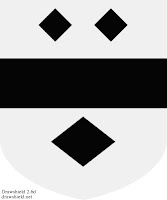 |
Gambier Parry coat of arms
[Argent, a fesse between
three lozenges sable] |
Issue of Hon. Evelyn Elizabeth (Palk) and Ernest Gambier Parry:
5A)
THOMAS ROBERT GAMBIER PARRY of Oxford, Keeper Oriental Dept. Bodleian Library 1931-35,
b. 13 Feb. 1883 Belgravia, London,
bap. 1 Apr. 1883 Holy Innocents Church, Highnam;
d. unm. 15 Feb. 1935 Oxford,
bur. 20 Feb. 1935 Holy Innocents Church, Highnam.
5B)
(THOMAS) MARK GAMBIER PARRY of Highnam Court,
b. 29 May 1884 Belgravia,
bap. 5 July 1884 Holy Innocents Church, Highnam;
d. unm. 9 Aug. 1966 Highnam Court,
bur. 15 Aug. 1966 Holy Innocents Church, Highnam.
6)
EDWARD ARTHUR PALK, 5th Baron Haldon of Haldon,
b. 26 June 1854 Portman Square, London,
bap. 10 July 1854 St George Hanover Square;
d.s.p. 11 Jan. 1939 Little Testwood House, Totton, Hampshire;
m. 18 July 1883 St Swithin Church, Shobrooke, Devon, CHARLOTTE FRANCES SHELLEY,
b. 21 May 1855 Bere Ferrers, Devon,
bap. 17 June 1855 St Andrew Church, Bere Ferrers;
d.s.p. 12 Jan. 1931 Little Testwood House, only dau. of Rev. Sir Frederick Shelley, 8th Baronet of Michelgrove (1809-1869, descended from Edward III) and Charlotte Martha Hippisley (1812-1893).
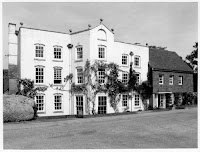 |
| Little Testwood House, Totton, Hampshire |
[
*1]
Lidiana Maichlé m. 1st (allegation 23 Apr.) 1881 St James Westminster,
Delos Fenimore Drew, ticketing agent,
b. 29 Nov. 1853 Michigan, USA;
d. 10 Aug. 1886 Chicago, Illinois, USA,
bur. Oakwood Cemetery, Adrian, Lenawee County, Michigan, son of Daniel Delos Drew of Chicago, ticketing agent (c.1830-1884);
m. 2nd 26 Oct. 1886 Registrar Office, Strand, London (alleged
divorce Oct 1892 Stockholm, Sweden),
Erik Fredrik Bolvid Forssell of Sweden.
It's interesting to note that of the twelve adult grandchildren of the 1st Baron Haldon, only five went on to have children themselves, and that today, the only living descendants of the 1st Baron Haldon are those of his elder daughter, Hon. Annette Baird.
The
next blogpost will look at a line of descent from Edward III for Maria Harriet (née Hesketh), Lady Haldon, that is an addition to Ruvigny's 1911
Mortimer-Percy volume.
Cheers, ------Brad






















